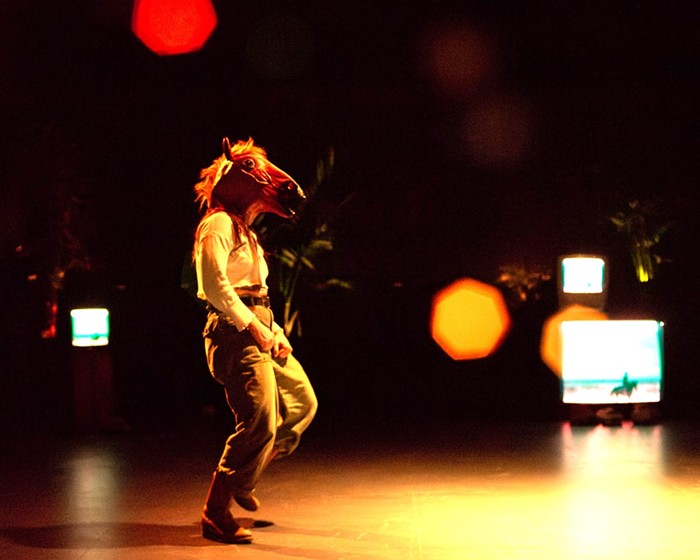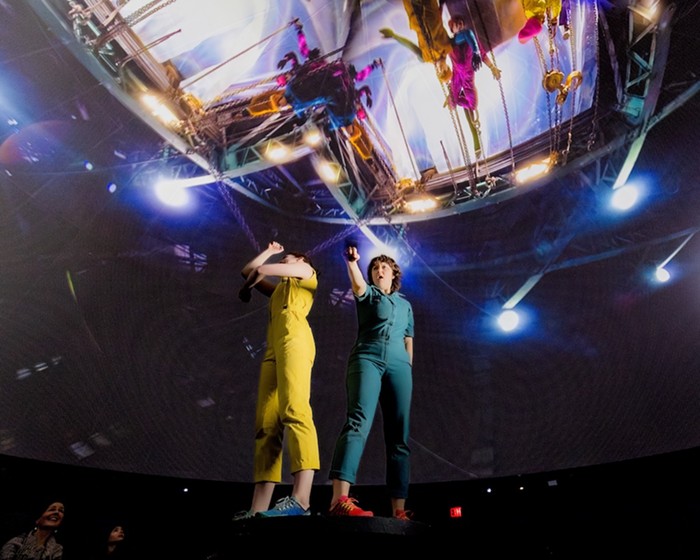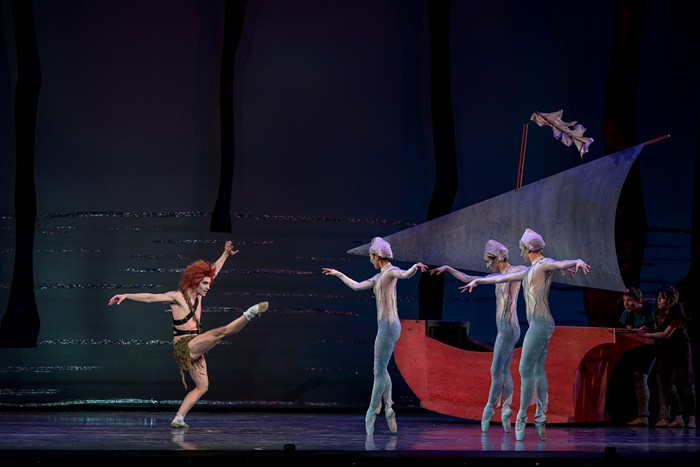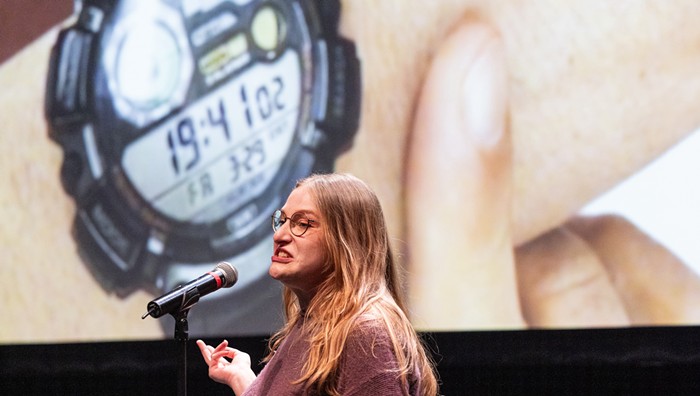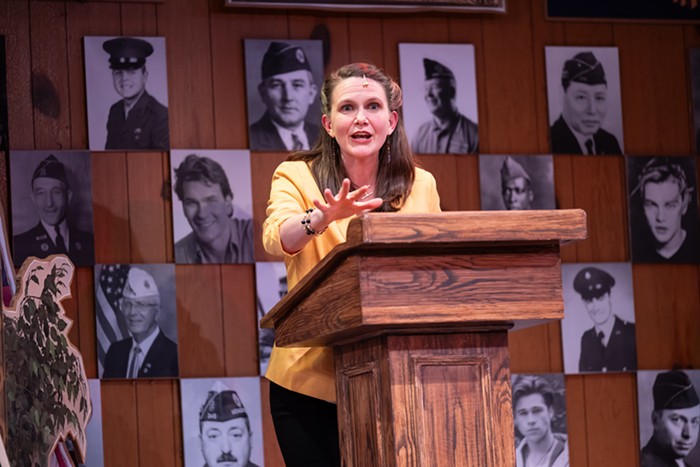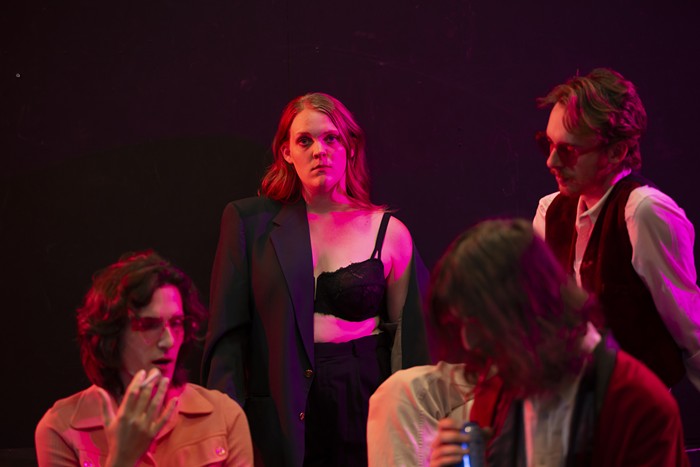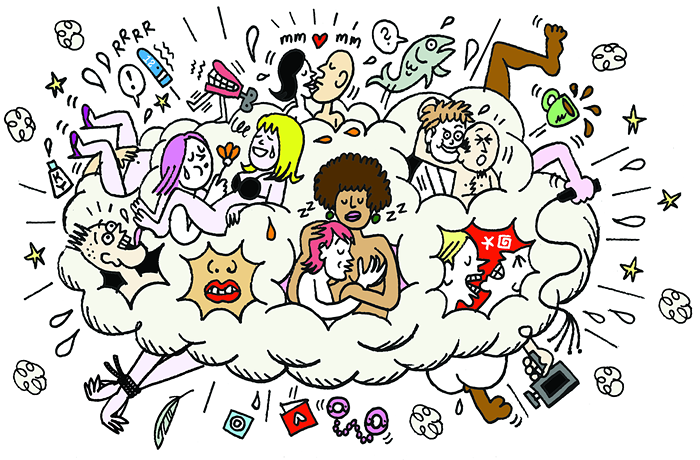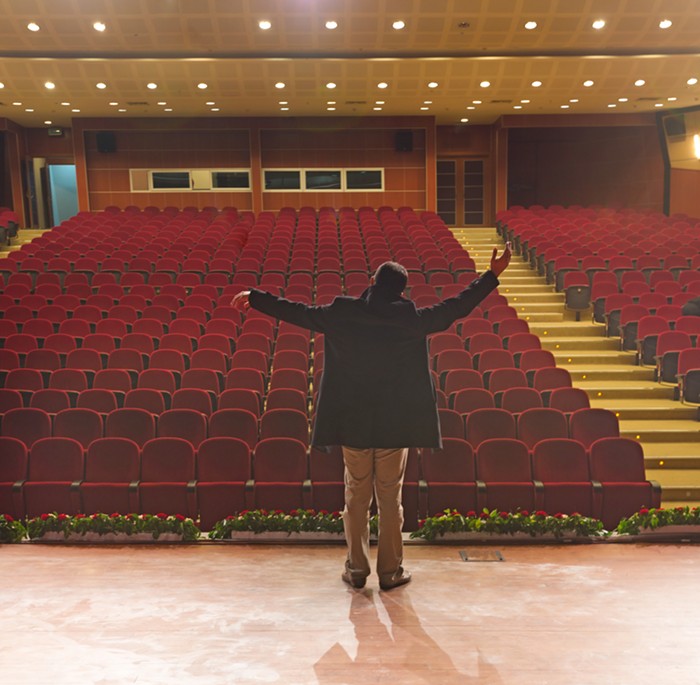
In college, I took a course on literary and cultural theory. I spent hours, face buried in my textbook, reading and rereading chapters on Roland Barthes, Michel Foucault, and Jacques Derrida. Thankfully my professor was skilled at explaining the ideas of these philosophers. If not for her, it would have been a completely frustrating quarter. Adam Linder’s The Want constantly reminded me of the arduous experience of reading that textbook, always on the cusp of understanding, but unable to cross that threshold.
The Want is loosely based on French Playwright Bernard-Marie Koltès’ 1985 play In the Solitude of Cotton Fields. In the original play, two people—identified only as the ‘dealer’ and the ‘client’—have a long exchange about a possible transaction. Linder strips Koltes’ work down to its essence and then rebuilds it, using text from French philosophers and American hip-hop artists. Also, it’s an opera.
Linder turns the ‘dealer’ and ‘client’ into the ‘offeror’ and ‘offeree’. Each role is played by two performers wearing identical white dress shirts, black shorts, and dress shoes, who move and speak as two bodies with one mind. The offeror approaches the offeree, with whatever it is they need or want. The offeree rebukes them, saying that they are not looking for anything in particular—that they are simply walking in some undefined area.
The object of the transaction is at various times alluded to be sex, drugs, violence, or friendship. The amorphous nature of the characters further obscures the nature of the transaction they are in engaged in. The audience can ascribe them any identity. As the piece goes on, the offeror and offeree struggle to define the power dynamic between them and the nature of transactions.
Amorphous is the word that best describes this show. There is no narrative arc. Instead, the work's intensity surges and wanes. The white stage has no geography, except for a few makeshift mannequins on the edges that serve as coat racks. The lights bathe the performers in every color imaginable, but seemingly at random. The music, or more accurately sound design, is a stream of sounds and atonal instrumentation. Lines are spoken, sung, chanted, and—just once—rapped. The choreography shifts from animalistic, to loose and flowing, to sharp and rigid and back again; the only movement or gesture I caught repeated was one of the performers very subtly rubbing their fingers together as if demanding cash. At one point, all the performers dress as Hassidic rabbis.
Nothing feels haphazard about the show. The production might seem random, but it’s slick. It’s just that visually, Linder seems to want to prevent the audience from extracting meaning from what they observe.
There are no subtitles. Instead, the audience is given a program with all the lyrics, complete with tiny, cryptic annotations. But it’s generally too dark in the theatre to follow along.
The text of The Want is dense and meandering. It doesn't offer any easy explanations and the form actually works against comprehension. See, while the libretto is in English, the actual operatic singing often distorts the text, making the lines difficult to understand. This is particularly true when all the performers are singing at once. There are no subtitles. Instead, the audience is given a program with all the lyrics, complete with tiny, cryptic annotations. But it’s generally too dark in the theatre to follow along, so I couldn’t seriously begin to engage with the actual text until after it ended.
Walking out of Lincoln Hall, I wished I had brought someone to the show with me. Or that I had another patient professor, ready to make sense of what I had experienced. If you’re someone who enjoys performance and cultural theory, The Want might be a perfect synthesis of the two. If you’re not, then you might find it infuriatingly obtuse and dull.
We're all over this year's TBA! Keep up with us for reviews and critical impressions at: portlandmercury.com/tba
